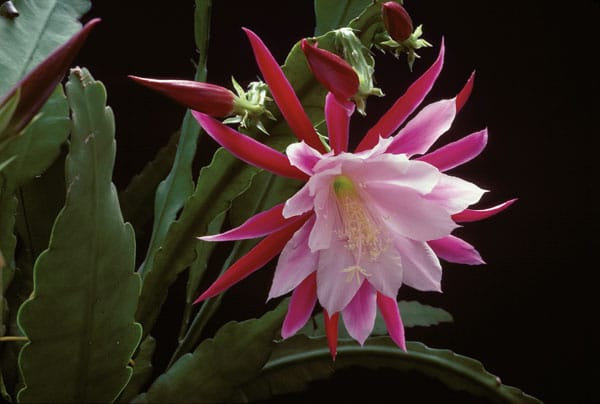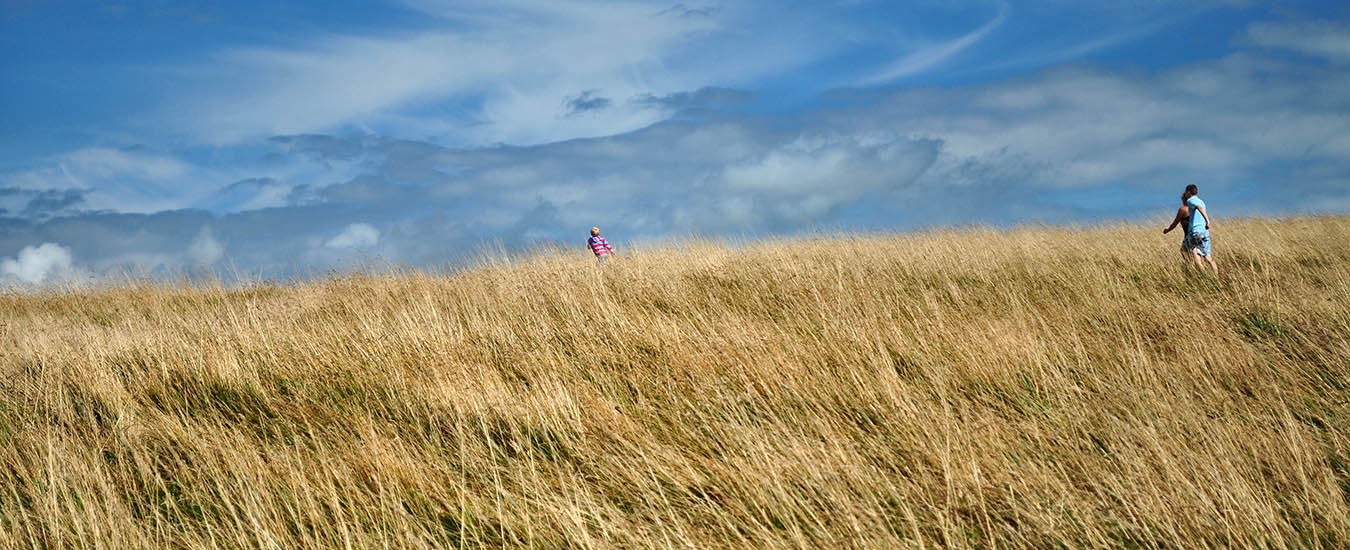Stunning photos of blooming cacti greet people as they enter the corridors leading to the greenhouse. It's The Paul J. Brunelle Cactus and Succulent Photo Gallery and it's right here in Atlantic Canada.
If you're one of many Atlantic Canadians who think it's too cold and wet to grow cactus plants here, you might want to reconsider. A Nova Scotia man has been raising cacti for almost 50 years.
Paul Brunelle has grown hundreds of cacti and other succulents, nearly all from seed. In fact, he has donated hundreds of the plants to Dalhousie University in Halifax, where they flourish in the greenhouse on top of the Life Sciences Building.
Cacti are not just those green, spindly, prickly things we usually envision.

"When they flower," Brunelle says, "they bloom magnificently. In spring, in the desert, people come from all over to see them in bloom. Rightly so. The scent of many is fabulous in the evening. It attracts moths and other pollinators from miles away."
Stunning photos of blooming cacti greet people as they enter the corridors leading to the greenhouse. It's The Paul J. Brunelle Cactus and Succulent Photo Gallery. Brunelle grew the plants and he took the pictures. There's "magnificent pincushion" from Mexico, with a crown of brilliant pink blossoms. "Little mouse" is a crown cactus from Bolivia with bright orange, trumpet-like blooms. "Starfish flower" is a succulent milkweed from the tropics.
Botanists call cacti and other succulents "xerophytes." They are usually fleshy plants that store water in their leaves, stems, and roots. They have adapted to survive on minimal amounts of water. Many are found in deserts, but some can live on arid mountainsides such as the Andes and even in jungles and along shorelines. Some survive on mists absorbed through their spines, nature's modification of leaves and stems. While many require sunlight, others need shade from shrubs or rocks. Other succulents are similar to cacti but are not actually related.
All cacti, with one possible exception, are natives of the Americas, from southern Canada to Patagonia. Brunelle, who's now 83, saw his first Canadian cactus while on a visit to relatives in Saskatchewan in the 1950s. He brought two east, a prickly pear and a pincushion. "I became fascinated, because they were in bud. The prickly pear bloomed-a beautiful golden yellow."
His love affair with cacti had begun.
Brunelle was already a gardener; he and his wife Gwen were growing African violets and belonged to the local horticultural societies. He acquired seed from other countries and began to grow various cacti in his greenhouse. He eventually supplied seed to other growers. He joined international xerophyte societies, learning more about them, always expanding his collection. Brunelle says most people think cacti are "lumps with spines." He grew such beautiful blossoms that he wanted to share them. Already a hobby photographer, he set out to improve those skills so he could capture the beauty of his plants. His collection now includes 6,000 slides and his photographs have won numerous awards.
 The cacti, though, have only been a hobby, an interest and a passion for a man who did many other things in his day jobs. Brunelle started work as a machinist and machine designer. He joined the RCAF in 1939. "I became a fitter armourer and fixed anything wrong with aviation weaponry," he says. After the war, he returned to civilian life as a machinist. But the forces called again, and this time he joined the navy's aviation branch. He retired in 1968, in Dartmouth, but quickly returned to full-time work, organizing and managing a community credit union. He was husband to Gwen and father to Paul-Michael and Therese.
The cacti, though, have only been a hobby, an interest and a passion for a man who did many other things in his day jobs. Brunelle started work as a machinist and machine designer. He joined the RCAF in 1939. "I became a fitter armourer and fixed anything wrong with aviation weaponry," he says. After the war, he returned to civilian life as a machinist. But the forces called again, and this time he joined the navy's aviation branch. He retired in 1968, in Dartmouth, but quickly returned to full-time work, organizing and managing a community credit union. He was husband to Gwen and father to Paul-Michael and Therese.
He has always been a gardener. He started with boyhood chores helping in the family vegetable garden. His machinist and fix-it skills have come in handy. When he needed something special for the plants, he designed it and then built it himself, including a greenhouse. He had no formal courses in botany, but over the years, his collection and his expertise grew. People come to him for all kinds of information, and he's always ready to help. That's how he met Carman Mills about five years ago. Mills is an ornamental horticulturalist and the manager of the Dalhousie Greenhouse. He was working on a project grafting cacti and was told Paul Brunelle was the man to see. "He was delightful, a wealth of information," says Mills, "and so interested in conveying that information to me." What was supposed to be a half-hour meeting on grafting has grown into a friendship and collaboration. Looking after several hundred cacti and the photography collection became too big a job for Brunelle, especially when his wife became ill. After Gwen died, Paul Brunelle, confident that Carman Mills could look after his collection properly, donated it to Dalhousie. By this time, he had about 1,200 plants, hundreds of photographs, 6,000 slides, and many journals and books. The collection is used in biology courses, particularly in evolution, plant systematics, and biodiversity. It's a welcome asset, providing a wide variety of plants that are not native to this region and so would not otherwise be available to the students. Many are naturally curious and find the cacti exotic and appealing.
Pierre Taschereau teaches plant systematics, the classification of plants. In his labs, students take some of the cacti apart to see how the flowers are structured. "It's an enormous asset," says Dr. Taschereau, but "the biggest asset is Paul Brunelle himself. He explains things very clearly, and he can really get the students enthused about it. They come to a much better understanding of the cactus family."
"It'll be self-sustaining. It'll go on long after I'm gone," says Brunelle.
"This is where my joy comes, in knowing these things will survive me. Somebody's going to be inspired to take over the collection and improve on it, so eventually it'll be world-renowned as a teaching collection."
Brunelle keeps "just a few" orchid and Christmas cacti at home in Dartmouth. "I wanted some and they're easiest to look after." And he goes to the Dalhousie Greenhouse two or three times a week, usually in the mornings, to tend the cacti and help with anything they need. Does he have a favourite? "I'd have to say all of them," he says, with a shy grin.

